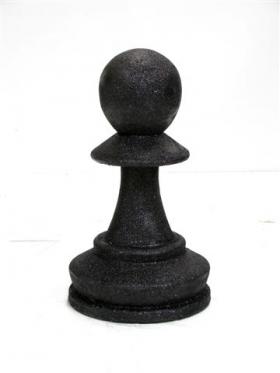This is the opening issue of my new series Move by Move Chess Improvement
I have chosen to analyze a game in which Black misunderstood the most important plan of the position and what followed were some missed opportunities from both sides and some hidden practical chances. I want to thank Fujiicorn for submitting the game. The report now follows:
Try to calculate the entire line before moving any pieces, and only then checking your result with the answer.
I wonder if Black intentionally sacrificed this pawn - I bet that it was not intentionally sacrificed, but despite losing a pawn, Black still retained positional compensation due to White's weakened dark squares and weak e4 pawn.
This raises the question, What should have Black played instead of ...d6? It seems that if Black castles, White can play the annoying 10. Qa4 and force Black to play 10...Bb6 and after 11. Bxb6 cxb6 (axb6 is impossible due to the pin on the a8 rook) 12. d6! and Black is positionally busted. But does Black really have to play 10...Bb6? I have to admit that then I turned on my computer, and was amazed by the following computer-generated attack:
But that was a rather computer inspired attack and Black (who was human) can hardly be blamed for missing it!
Now let's continue on with the game:
Q: What should have Black played instead of 11...Nh5?
hint: Think pawn structure.
*******
A: When we think about a plan the first things we should look for are weaknesses. We can immediately point out that White has a weak e pawn because it is "backwards" (there are no pawns behind it that can protect it) and Black has a half-open e-file to attack the e pawn with.
Thus, the correct strategy is to pressure the e pawn with ...Re8! or ...Qe7!
Black avoids playing this principled continuation and instead aims to put a knight on f4. This is what Black usually plays in this type of middlegame, but only if Black still has a pawn on e5. However in this case, the e pawn is absent and Black needed to recognize that this also required a difference in strategy.
************************************************************
Chess Tip: Oftentimes you will be presented with
very similar positions with subtle differences,
you must try to figure out how these differences
affect whether or not you should adopt the
same plan.
*****************************************************
Now continuing with the game:
Find the best move for White to win a piece (again, try to calculate the line to the end before making any moves!)
Instead, White missed this opportunity and let Black off the hook. Let's go back to the game:
Critical Moment: Black is clearly better in this endgame, but now is at a crossroads. Should he exchange knights (Nxc3) or keep them on the board with Nxd4? I should point out that the pawn on d4 is not for free - White can simply play Rd1 and then Nb5, attacking the pawn on c7.
Let's first look at the exchange of knights:
As we saw, had Black traded knights then he would have obtained a stable advantage due to the better pawn structure and active pieces. But I think Black may have miscalculated something here or simply let his guard down - regardless, this made White's defensive task a lot easier:
Q: White has 3 connected passed pawns on the queenside - what is the best way for Black to keep control of them?
A: Black must use his bishop to attack the pawns and keep them "in check." Thus:
Black chose a different route in the game:
What did we learn from this game? (I'll try to keep them short)
- Watch out for tactical blunders in the opening.
Evaluate each position individually instead of playing a "pre-made" plan.
Look for opportunities to transform one advantage to another.
Always be on the lookout for ways to give your opponent practical problems.
Thank you for reading! As this series is just beginning, I am extremely open to suggestions on improvements!
---------------------------------------------------------------------------
-Want your game analyzed?
-Join the group Move by Move Chess Improvement
----------------------------------------------------------------
